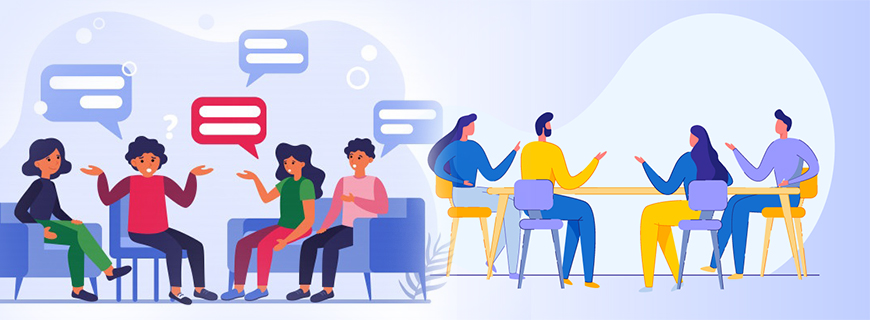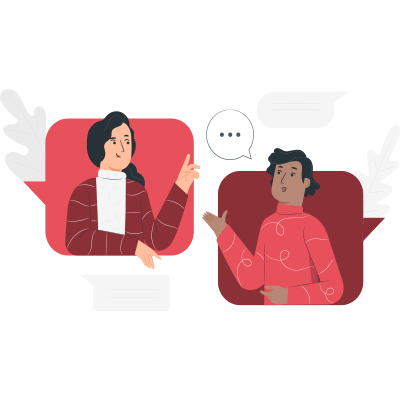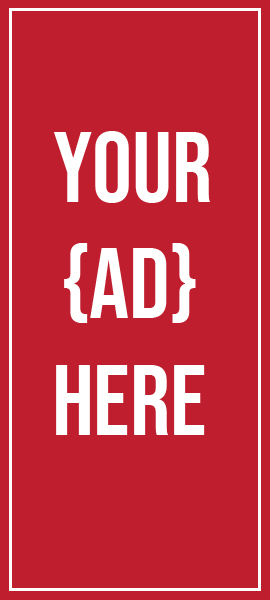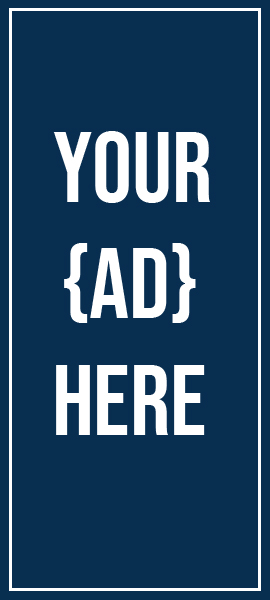
The Power of Body Language
The body never lies.
– Martha Graham
The age-old adage, “actions speak louder than words,” has become very relevant in today’s society with regards to communication. In service-oriented jobs in particular, workers need to master verbal and nonverbal communication in order to succeed.
We are constantly communicating, even when we are not speaking. Unspoken communication affects our work and personal relationships, how we negotiate, manage, and our interpersonal skills. Studies show that 93% of what is communicated is done through nonverbal communication and 60-80% of what is communicated is through body language.
Understanding nonverbal communication does more than improve relationships. It gives you insight into the thoughts and feelings of those around you. Because it is not a conscious form of communication, people betray themselves in their body language. Nonverbal communication is powerful in several ways such as:
It is honest: It conveys truth, even when words do not.
Creates self-awareness: It helps you identify your own actions that hinder success.
Understand feelings: It shows feelings and motive such as aggression, submission, deception, etc. Use these as cues to your communication.
Enhance listening and communication skills: Paying attention to nonverbal communication cues makes someone a better listener. Hear between the words spoken to what is being said.
Actions Speak Louder than Words
Many people consider body language to be the only form of nonverbal communication. However, nonverbal communication includes much more because each day we nonverbally signal our attitudes, moods and values to others. For example, if you dress special for a certain date, console someone with a hug; frown as you look at something, you are in fact communicating nonverbally. We are often unaware of our nonverbal behaviours. In our attempt to increase sensitivity to different types of our nonverbal behavior, we will examine facial expressions, eye behavior, kinesics and body movement, personal appearance and clothing, touching, proxemics, paralanguage etc.

Our impressions of each other are based on more than words. People can have cordial conversations and not like each other. The actions that we take are stronger than our words. For example, a person may dismiss someone using body language and not saying anything negative. Like it or not, our body language makes a lasting impression on the people around us.
When you speak, you send two kinds of messages to your audience. While your voice transmits a verbal message, a vast amount of information is being visually conveyed by your appearance, your manner, and your physical behavior.
Research shows that your listeners base their judgment of you and your message on what they see as well as upon what they hear. So your body can be an effective tool for adding emphasis and clarity to your words. It’s also your most powerful instrument for convincing your audience of your sincerity, earnestness, and enthusiasm.
However, if your physical actions are distracting or suggest meanings that do not agree with your verbal message, your body can defeat your words. Whether your purpose is to inform, persuade, entertain, motivate, or inspire, your body and the personality you project must be appropriate to what you say. Here’s an example of what actions can say:deception, confidence, nervous, boredom, emotions, attraction, being open and being closed offetc.
To become an effective sales person, you must understand how your body speaks. You can’t really stop sending your audience nonverbal messages, but you can definitely learn to manage and control them.
As mentioned earlier, much of the way people communicate is nonverbal. Nonverbal specifically focuses on physical, which includes the following characteristics -
Proximity: The distance between people
Positioning: Position of a body
Facial expression: The eyes are particularly noticed.
Touching: This includes objects, people, and themselves.
Breathing: The rate of respiration is telling.
In many ways understanding body language is like learning a foreign language. There are a few tips that make learning any language, even a nonverbal one, easier. For example -
Set Goals: Make sure that your goals are realistic and have specific timelines.
Devote time to learning: Schedule time to practice. Do not rely on spare time.
Practice daily: Hone skills by continued practice.
Enjoy the process: You are not in school. Relax and have fun with your new skill.
Warm Up Exercise
List four nonverbal communication cues including Body Language signs with their meaning, that you feel you have a strong understanding of.
Nonverbal Communication Breakdown
Nonverbal communication can be broken down in seven broad components namely –
Facial Expressions: The most influential nonverbal communication channel for expressing attitudes and emotions to other people is the face. There are six commonly accepted facial expressions: anger, disgust, fear, joy, sadness, and surprise. Knowledge of how facial expressions represent the attitudes and emotion of others in a work environment can be very beneficial. For example, the smile is a very powerful form of facial expression. A smile carries great significance in establishing and sustaining relationships. Salesmen use this concept in hopes to seem friendlier to customers in order to have higher sales. Facial expressions convey a lot more information than words can ever say. A frown on the face shows discontent, a smile shows joy, engrossed look with palm on the chin shows thinking and red face with a stern look and clipped lips under teeth conveys anger. These instances prove how important are facial expressions for effective communication.
Eye contact: is quite helpful in learning about a person. Looking at someone in a face-to-face discussion usually refers to looking into the eyes of person. The eyes along with the eyebrows, eyelids and pupils convey feelings of people. For example, raised eyebrows with dilated pupils show that the person is surprised, excited or frightened.
Haptics: is described as the use of touch when communicating.The most common use of haptics in business is the handshake. Everyone in the business world has been told, at one point or another, a firm handshake is key to a good first impression. However, there are several variations of the handshakeand knowing when and how to use the variations is a helpful tool. Here are most common variations –
A firm handshake - conveys power, confidence, and sincerity.
A limp handshake – conveys weakness, lack of confidence, deceit.
A clasp – using both hands displays a high degree of respect.
A vice like grip – is used to intimidate or display dominance.
Proxemics: Proxemics refers to use of space and how interpersonal distance and space is maintained between people. There are typically four spatial zones –
The first is the intimate zone. This zone is used when people are emotionally close, such as dating, married, etc. In this zone individuals typically stand between zero and two feet apart when communicating.
The second is personal zone. This is the most common zone when communicating in the work place. The norm when communicating in this zone is two to four feet of distance.
The third zone is the social zone. This zone is typically seen when giving presentations to coworkers. In the social zone individuals are between four and nine feet apart.
Lastly, anything over nine feet is considered the public zone.
Chronemics: is the study of time in communication. “Time and tide wait for none”- this an age old saying and so people who respect time communicate sincerity, discipline and alertness. Time is also equated with money. A latecomer is not perceived to be sincere and people avoid giving such a person responsible tasks. Similarly procrastination is considered to be a symbol of irresponsibility. Thus, time communicates about a person’s nature. It is also true that the importance that we attribute to time is culture specific. In western culture, there is nothing more important than time. But in Indian culture, we have a relaxed attitude to time.
Kinesics: Kinesics is the use of gestures and postures to communicate effectively. Gestures and postures are the frequent and continuous movements of the body.They are expressions communicated especially with the help of hands, neck and shoulder. Curling of the fingers in and out at someone means “come here”, waving of hand means “good bye” etc...Gestures have different meanings in different cultures. Smile and cry are the only universal gestures that human beings across globe use to express pleasure and despair respectively. The key to effective gestures and postures is they need to appear natural and authentic.
Paralinguistic Cues: Paralinguistic cues refer to the manner in which language is spoken. Thus, paralanguage is the “how” in spoken language, while the words and sentences are a part of “what” in oral communication. Paralanguage includes voice, volume, speed, stress, intonation, pitch and pause. The vocal cues based off the sounds of the human voice. There are five attributes vocal cues consist of: loudness, pitch, rate, quality or timbre, and regularity. Loudness is the volume one uses when speaking. If you speak in a very high volume, others will perceive you as shouting. If you speak in a low volume, you will not be heard. Pitch is the amount of inflection in your voice when speaking. A higher pitch can be used to elicit excitement, whereas a low pitch can be used to express anger. Rate is how quickly or slowly one speaks. Speaking too quickly can express nervousness, but if you speak too slowly you may lose the attention of the listener. Timbre is the characteristic that permits an individual to differentiate one person’s voice from another. Lastly, regularity is the consistency in tone one uses. The more consistent your speech pattern is the more confident or authoritative you appear.
Appearance & Dress: Believing that others “do not judge a book by its cover” is a naive frame of thought. How people dress and present themselves proclaims their persona and creates a first impression about them. Appearance includes the body structure, shape and posture. People with heads held high with a straight body posture are considered to have a good personality. These people are perceived as ones with great integrity, confidence and self-respect as against ones who bow their heads down or keep leaning. If a person is sloppily dressed some may assume their work is also sloppy. If one’s appearance is well kept and professional others might assume their work follows suit. To be successful, one needs to look the part and “appear corporate”; doing this will lead to a better first impression.
Practical Application
Jim had to hire a new personal assistant. He needed someone organized and personable. Jen answered all of the interview questions perfectly. She had the necessary training and education, so Jim hired her. After a few weeks, some of Jim’s coworkers complained about her behavior. They accused her of being aggressive and insubordinate, but she never said anything specifically rude or hostile. Her tone and body language, however, were extremely aggressive. For example, she rolled her eyes when people asked her questions. Jim had to coach Jen on her nonverbal communication, and he added a body language evaluation to his interview process.





